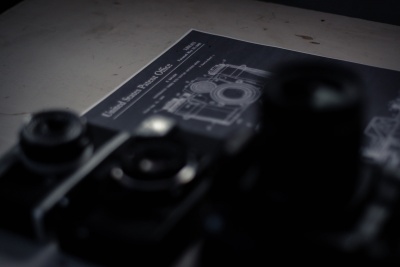Patent Rights
History
The U.S. Constitution, Article One, section 8 that was adopted in year 1787 authorizes the original patent law, which states that whoever invents or discovers any new and useful process, machine or drug may obtain exclusive use of that product for 14 years [4]. The patent law was originally designed to encourage inventors to commercialize their invention to encourage economic growth and further market innovations by ensuring profit for the duration of the patent. However, there was push back on the duration by inventors for being too short [5] The argument was that the majority of the 14 years for most inventors was spent getting the invention to market, and thus meant the inventor had very little time to profit from the innovation.
In 1836 significant revision of the patent rights law meant that inventors could get a 7 year extension on their patent, which would bring the patent time frame up to the current 20 years [6]. Over multiple revisions, the final patent law has a default of 20 years and with the possibility of extensions.
Argument
Firstly, 20 years of exclusive use is unnecessary, and creates monopolies. At the time when these laws were written 225 years ago, the pace of technology was very slow. It took 40 years to develop a steam engine, 10 years of work by Edison to invent a simple light bulb. Thus, it made sense to reward “exclusive use” rights to such inventors for 20 years; to allow them time to re-coup their investment of effort and money. However, The pace of technology is very fast now and changes of a magnitude that once took centuries now happen in years. For example, Apple patented its first iPhone in 2007. According to the Wall Street Journal, Apple’s net profit was 3.5 billion. Apple slowly worked its way up to the iPhone 6 in 2014 where its’ net profit was 40 billion for the year. They have recouped their investment many times over the years and have clearly monopolized the market. The article cites that they have successfully won over hundreds of patent lawsuits they have filed, simply because they have more money to fight, disabling any company to create a similar product. The U.S. government purposely does not allow monopolies, and granting 20 years of exclusive rights does exactly this.
Next, consumers will benefit tremendously if exclusive use is limited to 5 years. Let’s take an example. According to the FDA, The world’s best-selling drug, Lipitor, a cholesterol reducing drug, was introduced in 1997 and was priced $150 per supply of 30 days. In 2012, their patent expired and the generic are selling for $15 per months’ supply. Just imagine, if the exclusive use was limited to 5 years, the price for this drug would have been lowered by 10 times many years ago. Many people were not able to afford such drug and just gave up hope. These lowered prices could have saved so many lives! Thus, lowering the exclusive use to 5 years brings prices down for the product quickly and the consumer benefits tremendously.
Now lastly, the opposition will argue that individuals who have put much time, money and effort deserve to have this patent right. And they do, just not for that long. In this day and age, there are many engineers and scientists developing solutions to human issues. Say for example, there are two people working on an idea, and one is able to patent the idea first. If this person does not grant rights to others, they now have 20 years of exclusive rights on a simple mechanism. This hampers the innovation of technology completely, and disables any others from further improving the product for the good of society.
There are over six million patents to this day since 1790, most of which have never seen the light of day. Reducing the patent law to a shorter ten year term, can drastically change the rate at which people are able to innovate.
References
2. https://www.bitlaw.com/patent/rights.html
3. https://www.wipo.int/patents/en/topics/exceptions_limitations.html
4. https://www.nolo.com/legal-encyclopedia/who-owns-patent-rights-employer-inventor.html- ↑ Fisher, William Weston. Patent Britannica." 27 May 2019. Retrieved 04 April 2021.
- ↑ Cornell Law. A Brief History of the Patent Law of the United States Cornell Law School." Retrieved 04 April 2021.
- ↑ Malek, Widerman. Why Are Patents Important? Widerman Malek." 02 May 2015. Retrieved 04 April 2021.
- ↑ Ladas. A Brief History of the Patent Law of the United States Ladas & Parry. 07 May 2014. Retrieved 04 April 2021.
- ↑ Ladas. A Brief History of the Patent Law of the United States Ladas & Parry. 07 May 2014. Retrieved 04 April 2021.
- ↑ Ladas. A Brief History of the Patent Law of the United States Ladas & Parry. 07 May 2014. Retrieved 04 April 2021.
